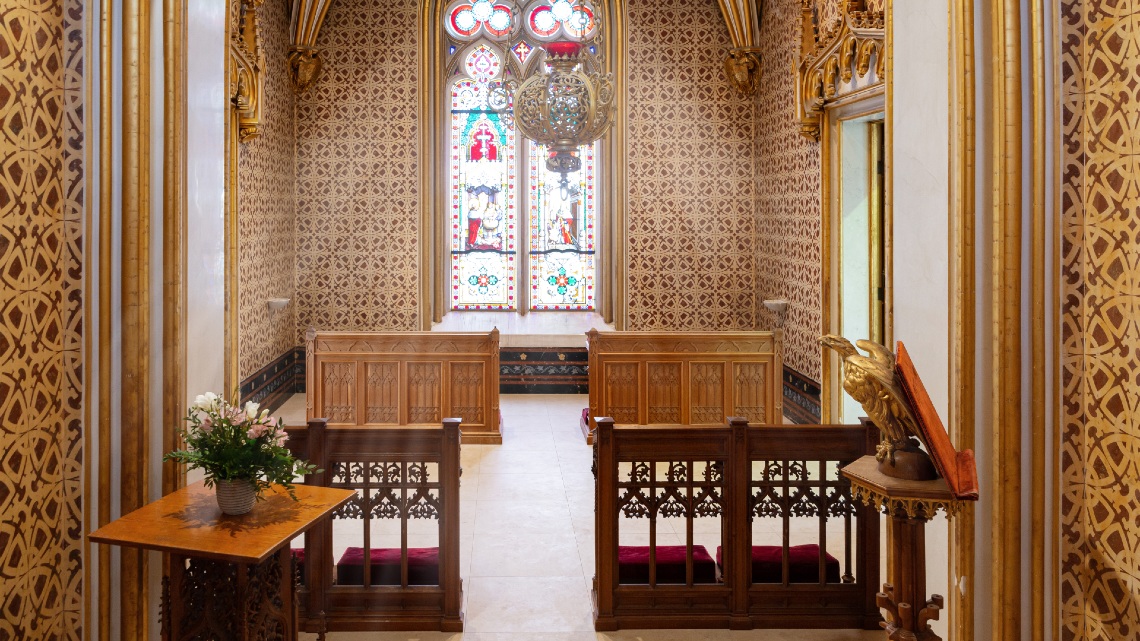The History
On the edge of the Vienna Basin, in the foothills of the Styrian-Lower Austrian Limestone Alps, lies the former hunting lodge of the Habsburg-Lothringen family - Schloss Hernstein.
Documentary evidence of the history of Hernstein reaches back to the end of the 11th century. Herrand von Falkenstein founded the little castle to mark the third Bavarian settlement under Leopold III of the house of Babenberg.
The Falkenstein family died out in 1272 and ownership passed to the Diocese of Freising. The Pottendorf family, which appropriated ownership violently and without legal title, ruled the estate into the 14th century. While most castles became splendid estates, Hernstein remained a farm.
In 1515, command of Hernstein passed to the owners of Starhemberg Castle, who accommodated their unprovided-for family members in the farmstead. In 1577, Hans Freiherr von Heussenstein acquired the property. In 1683, the village was devastated by the Turks; the church and the farmstead burned down. The Heussenstein family built the “Neues Schloss” between 1727 and 1730, making the castle’s foundations over 250 years old. The stalls for the sheep and horses were at ground level. A painting by Wagner shows the castle as having three oriel windows on the south-west façade.
Financial difficulties ultimately led to its sale. It was bought in 1798 by the Dutch State Councillor Heinrich Freiherr Müller, who added the title “Von Hörnstein” to his name. He had the ground level wing converted for residential purposes and removed the oriel windows.
In 1831, his sons sold the estates to Archduke Rainer, son of Emperor Leopold and brother of Emperor Franz. After his death in 1854, his oldest son Archduke Leopold Ludwig inherited the property.
It was he whom Schloss Hernstein has to thank for its facilities and present-day form. Just two years after the acquisition, work began to remodel and expand the castle in line with plans prepared by Theophil Hansen. This renovation took 28 years, with construction costs amounting to around 2 million guilders.
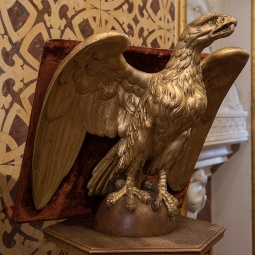
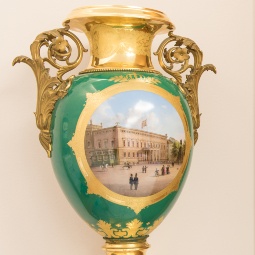
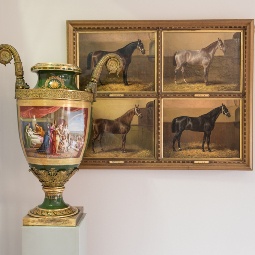
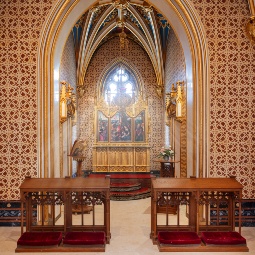
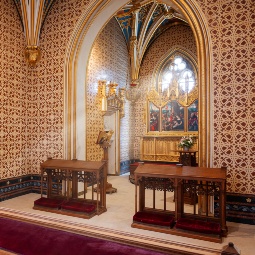
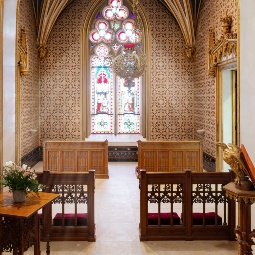
The existing old castle building became the present-day Schloss Hernstein, which has an English Gothic style. The castle’s interior reveals the care taken by the architect in the design of every detail. Echoes of the Musikverein building in Vienna are unmistakeable here. The park’s enlargement by Archduke Leopold Ludwig and the creation of a further section of parkland to the south, which included a large pond, provided the castle with a fitting backdrop.
When Ludwig died in 1898, his brother Rainer became the next owner of Hernstein. In 1913, the castle passed from him to a grand-nephew, Leopold Salvator, and in 1931 to his sons Anton, Franz Josef and Carlos.
It was a stroke of luck that the buildings did not suffer any serious damage during the two world wars. The Federal Monument Agency is to thank for the castle being preserved in the turmoil of 1919. During the second war, the roof was damaged by a direct hit and 26 shell strikes were counted in the castle park, but the castle’s interior was preserved.
In autumn 1943, the castle and park were sold to the Erste Österreichische Spar-Casse savings bank. Schloss Hernstein is one of the few private buildings to have been constructed in the “Ringstrasse style”, a type of Historicism.
On 1 January 1963, ownership passed to the Kammer der gewerblichen Wirtschaft für Wien (today’s Vienna Economic Chamber). In the years that followed, a cellar was built under part of the castle and the brickwork was dried out using layers of insulation; the façade was also restored with decorative elements of stone and terracotta.
While the partially preserved apartments of the archduke on the first floor were repurposed as event rooms, a new annex with guest rooms was built at the west end where the stables and coach houses once stood.
In autumn 1976, an annex was opened comprising a large lecture theatre, group rooms, a hotel extension and an indoor swimming pool with sauna.
Another new wing was opened in 1994. With 10 new rooms, reception, kitchen and restaurant with club bar, this was intended to increase quality over quantity.
